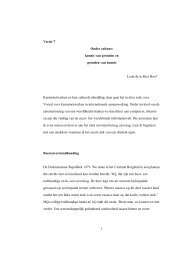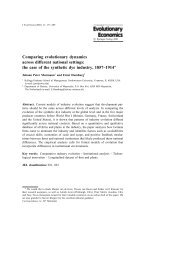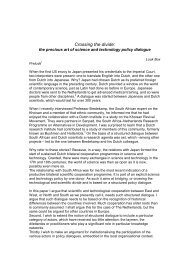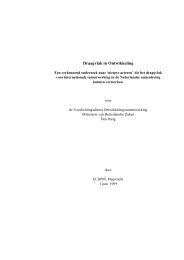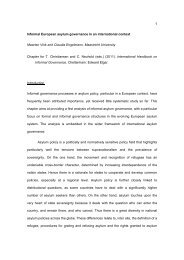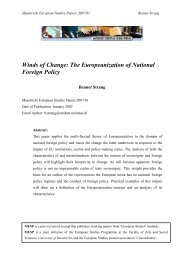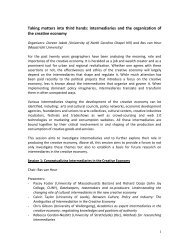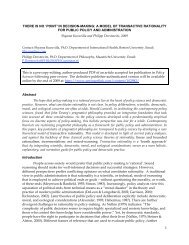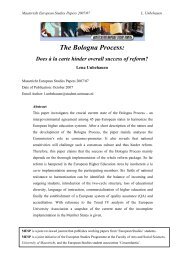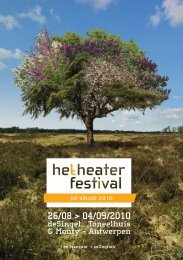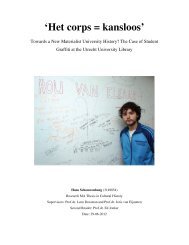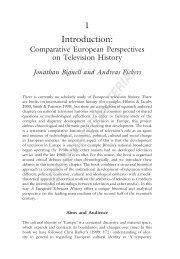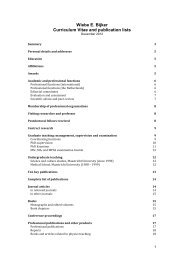About the Journal - Cities Institute
About the Journal - Cities Institute
About the Journal - Cities Institute
Create successful ePaper yourself
Turn your PDF publications into a flip-book with our unique Google optimized e-Paper software.
oth <strong>the</strong> above distinctions and <strong>the</strong> development a wider set of methods and case<br />
studies using social impacts, process-based evaluation and longer term research.<br />
Longitudinal impact studies have been undertaken in Gateshead (Bailey, Miles and<br />
Stark 2004), Glasgow (www.impact.arts.gla.ac.uk/), City Fringe London (Bagwell et<br />
al., 2009) and most recently for Liverpool‟08 (Culture North West, 2008 and see<br />
Moriarty, 2002). Measuring social impacts of arts programmes and evaluating<br />
participation and „public good‟ effects on host communities - beneficiaries,<br />
participants as well as „non-users‟ - have been advanced by particular action and<br />
policy research, notably Matarasso, Moriarty, Reeves, Evans & Shaw, including<br />
studies carried out in Liverpool (ACME, Hill and Moriarty and Lorente). A „triple<br />
bottom line‟ approach is also recommended by festival specialists as a route to<br />
embedding sustainable development principles into event planning and impact<br />
evaluation. Noting, perhaps over-optimistically that: „<strong>the</strong> effect would be to ensure<br />
that <strong>the</strong> usual claims of economic benefits are not accepted at face value, and<br />
that social, cultural and environmental measures of value would be equal to <strong>the</strong><br />
economic‟ (Getz, 2009, p. 76). A growing feature of social impact evaluation has<br />
been <strong>the</strong> use of oral history facilitated by low cost audio-visual and now digital<br />
media, as well as cognitive (Lask, 2011) and participatory mapping using<br />
Geographic Information Systems (GIS-P) and Planning for Real, blogs and<br />
community web sites, community-based design charrettes and more engaged<br />
insertion of artists in <strong>the</strong> regeneration site and process itself, including installations,<br />
residencies, visualisations and activism (Evans, 2009b). When applied over time, a<br />
richer and more robust picture is able to be built up; opinions and effects captured<br />
as <strong>the</strong>y evolve and change; survey data can be triangulated and validated; and<br />
participation in <strong>the</strong> process itself can form part of <strong>the</strong> „event‟, even long afterwards.<br />
Conclusions<br />
Given this knowledge and skill base, a measure of an impact study‟s quality and of<br />
its own „impact‟ should <strong>the</strong>refore be <strong>the</strong> range of research methods employed and<br />
those used within <strong>the</strong> event or intervention itself, and how <strong>the</strong>se are syn<strong>the</strong>sised and<br />
valued in drawing „meta-conclusions‟ in answering <strong>the</strong> key questions around<br />
„success‟, „attribution‟, „distribution‟ (social, spatial) and impacts. It can be<br />
concluded, however, that despite <strong>the</strong>ir principles and novel and multi-disciplinary<br />
methods, <strong>the</strong> impact studies, evaluations and assessments being undertaken and<br />
planned for future events (for example, <strong>the</strong> London2012 Olympics) are being<br />
undertaken a posteriori, with stakeholders who had little or no say in <strong>the</strong> actual<br />
decision, delivery or shape of <strong>the</strong> „event‟ (or regeneration scheme) itself, and its<br />
relationship with wider urban redevelopment.<br />
So that whilst <strong>the</strong>re is no shortage of „evidence‟, techniques and methods, how<br />
<strong>the</strong>se relate - if at all - to <strong>the</strong> governance and regeneration regime, and where<br />
power over which and whose culture is „invited to <strong>the</strong> festival‟ resides, is not<br />
apparent or at least not part of <strong>the</strong> evaluation or impact study process. The extent<br />
to which this accumulating evidence on <strong>the</strong> wider effects of hosting and delivering<br />
such mega-events has and may be used in <strong>the</strong> future to inform future events and<br />
both cultural and regeneration strategies, is at best marginal. Host city decisions lack<br />
„normal‟ rationality and are overridden by geopolitical and individual (commercial,<br />
13



